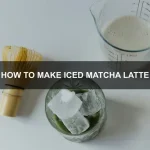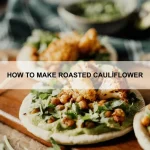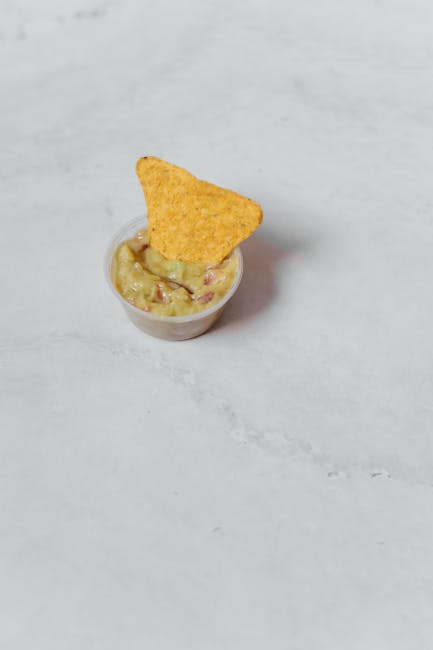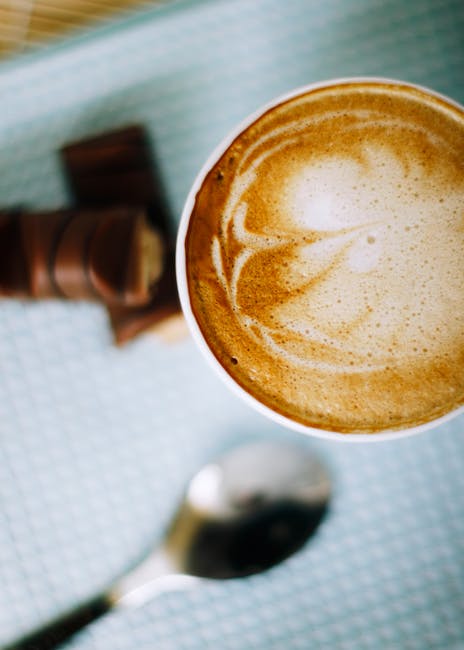The humble cupcake, a miniature cake baked in a paper liner, holds a surprisingly rich and fascinating history. While pinpointing its exact origin is difficult, its ancestor can be traced back centuries to the practice of baking small cakes individually in cups, rather than in a larger pan. Early recipes, often appearing in cookbooks from the 18th and 19th centuries, referred to these as cup cakes, emphasizing the method of baking rather than a specific ingredient. The term cupcake gained popularity in America in the late 19th century, coinciding with the rise of readily available baking powder and standardized measuring tools, making consistent, reliable results more achievable for home bakers.
The chocolate cupcake, a delicious evolution of this classic, emerged as cocoa powder and chocolate became more widely accessible. The exact date of its emergence is hard to pinpoint, however, its popularity exploded alongside the rise of mass-produced chocolate in the early 20th century. Today, the chocolate cupcake reigns supreme in the cupcake world. Statistics show that chocolate remains the most popular cupcake flavor globally, outselling vanilla and red velvet by a significant margin, with an estimated annual consumption in the billions. This enduring appeal stems from the rich, decadent flavor profile that satisfies both children and adults.
Beyond its deliciousness, the chocolate cupcake plays a significant role in various cultures. It features prominently in birthday celebrations, holiday festivities, and countless other social gatherings worldwide. In American culture, particularly, the chocolate cupcake is synonymous with comfort, indulgence, and celebration. It’s a staple at bake sales, school events, and family get-togethers, representing a simple yet deeply satisfying treat. Its adaptability also contributes to its cultural significance; from simple, classic designs to elaborately decorated masterpieces, the chocolate cupcake’s versatility allows it to fit any occasion and aesthetic. Learning to make the perfect chocolate cupcake, therefore, involves not just mastering a recipe, but also understanding the history and cultural weight this beloved treat carries.
Ingredients and Measurements
For achieving perfectly moist and decadent chocolate cupcakes, precision in measuring your ingredients is paramount. Using a kitchen scale is highly recommended for accuracy, especially when it comes to flour and cocoa powder. However, if you’re using measuring cups and spoons, remember to spoon and level your dry ingredients to avoid packing them down, which can lead to dense cupcakes.
Dry Ingredients:
- 2 cups (250g) all-purpose flour – Using cake flour can result in a slightly lighter texture, but all-purpose works perfectly well. Ensure your flour is fresh; older flour can affect the outcome.
- ¾ cup (60g) unsweetened cocoa powder – Dutch-processed cocoa powder will give you a richer, darker chocolate flavor, while natural cocoa powder offers a brighter, more acidic taste. Choose your preference!
- 1 ½ teaspoons baking powder – Always check the expiration date on your baking powder. Old baking powder will not rise properly.
- ½ teaspoon baking soda – This helps to create a tender crumb.
- ¾ teaspoon salt – Salt balances the sweetness and enhances the chocolate flavor. Don’t skip this!
- 1 ½ cups (300g) granulated sugar – Adjust the sugar to your preference, but reducing it significantly may result in less sweet and possibly drier cupcakes.
Wet Ingredients:
- 1 cup (240ml) buttermilk – Buttermilk adds moisture and tanginess. If you don’t have buttermilk, you can make a substitute by adding 1 tablespoon of white vinegar or lemon juice to 1 cup of milk and letting it sit for 5 minutes.
- ½ cup (120ml) vegetable oil – Oil keeps the cupcakes moist. You can substitute with melted unsalted butter for a richer flavor, but reduce the amount slightly (about ¼ cup).
- 2 large eggs – Use room temperature eggs for optimal emulsification and even baking.
- 2 teaspoons pure vanilla extract – Choose a good quality vanilla extract for the best flavor.
- 1 cup (240ml) freshly brewed hot coffee – The hot coffee enhances the chocolate flavor. Let it cool slightly before adding it to the batter.
Optional additions: For an extra decadent touch, consider adding 1 cup of chocolate chips to the batter before baking. You could also add a tablespoon of espresso powder for an even more intense chocolate flavor.
Important Note: Always measure your ingredients accurately and follow the recipe closely for the best results. Enjoy your baking!
Equipment List
Creating perfect chocolate cupcakes requires the right tools. This list details the essential equipment, along with recommendations for optimal baking results. Don’t skimp on quality; the right tools can make all the difference in achieving a flawlessly smooth batter and evenly baked cupcakes.
Mixing Bowls: You’ll need at least two mixing bowls, preferably stainless steel or glass. One large bowl (approximately 3-quart capacity) for creaming the butter and sugar, and a medium bowl (approximately 2-quart capacity) for whisking the dry ingredients. Avoid using plastic bowls, especially when working with fats, as they can retain odors and flavors.
Measuring Cups and Spoons: Accuracy is key in baking. Invest in a good set of measuring cups and spoons. Use dry measuring cups for flour, sugar, and cocoa powder, and liquid measuring cups for milk and oil. Always level off dry ingredients with a straight edge to ensure precise measurements. A kitchen scale is highly recommended for even greater accuracy, particularly when measuring flour.
Electric Mixer: A stand mixer is ideal, offering superior power and ease of use for creaming butter and sugar. However, a hand mixer will suffice. Ensure your mixer is powerful enough to handle the task; a weak motor may struggle with the thick batter. If using a hand mixer, be prepared for some arm work!
Rubber Spatula or Scraper: Essential for scraping down the sides of the bowls and ensuring all ingredients are thoroughly combined. A high-quality silicone spatula is preferred for its flexibility and ease of cleaning. Don’t underestimate the importance of this tool; it prevents lumps and ensures a smooth batter.
Muffin Tin and Cupcake Liners: A standard 12-cup muffin tin is necessary. Use cupcake liners to prevent sticking and for easy removal of the cupcakes. Paper liners also help maintain consistent cupcake size and shape. Avoid using silicone liners unless you are familiar with their impact on baking time.
Baking Sheet: Place your muffin tin on a baking sheet for stability and to catch any spills during baking. This prevents the tin from warping in the oven.
Wire Rack: Once baked, transfer your cupcakes to a wire rack to cool completely. This allows for even cooling and prevents condensation, which can make the frosting melt.
Optional but Recommended: A piping bag and tips for frosting, if you plan to decorate your cupcakes. A kitchen scale for precise ingredient measurements.
Preparation of Ingredients
Before you begin mixing your batter, meticulous preparation of your ingredients is key to achieving perfectly textured and flavored chocolate cupcakes. This stage might seem minor, but it significantly impacts the final result. We’ll start with the dry ingredients and then move on to the wet.
First, let’s address the flour. For this recipe, we’ll need 2 cups of all-purpose flour. Sifting the flour is crucial. This removes any lumps and aerates the flour, preventing dense cupcakes. Use a fine-mesh sieve and gently sift the flour twice into a large bowl. This simple step ensures a light and fluffy texture. Don’t skip this step!
Next, we’ll measure out the other dry ingredients: 1 ½ teaspoons of baking powder and ¾ teaspoon of baking soda. These leavening agents are vital for the rise of your cupcakes. Ensure they are fresh; old baking powder and soda can result in flat cupcakes. Add these to the sifted flour and gently whisk everything together using a whisk to combine evenly. Avoid over-mixing at this stage.
Now, let’s tackle the chocolate. We’ll need 6 ounces of high-quality dark chocolate, finely chopped. The quality of your chocolate directly impacts the flavor of your cupcakes. Choose a chocolate with a high percentage of cocoa solids (at least 70%) for a rich, intense chocolate flavor. For melting, use a double boiler or a heat-safe bowl set over a pan of simmering water. Make sure the bottom of the bowl doesn’t touch the water. Stir frequently until the chocolate is completely smooth and melted. Avoid overheating the chocolate, as this can cause it to seize.
For the wet ingredients, we’ll need 1 cup (2 sticks) of unsalted butter, softened to room temperature. This is extremely important; cold butter will not incorporate properly into the batter. Make sure your butter is truly soft but not melted. Also, measure out 1 ¾ cups of granulated sugar and 2 large eggs at room temperature. Room temperature eggs emulsify better with the other ingredients, leading to a smoother batter. Finally, prepare 1 cup of buttermilk. If you don’t have buttermilk, you can make a substitute by adding 1 tablespoon of white vinegar or lemon juice to 1 cup of milk and letting it sit for 5 minutes.
With all your ingredients prepped and measured, you are ready to start mixing your perfect chocolate cupcakes!
Mixing the Batter (wet vs. dry ingredients, avoiding overmixing)
The key to light and fluffy chocolate cupcakes lies in the proper mixing technique. We’ll be working with separate wet and dry ingredients to ensure even distribution and prevent a tough, dense final product. For this recipe, we’ll assume you’ve already prepared 1 ½ cups of all-purpose flour, ¾ cup unsweetened cocoa powder, 1 ½ teaspoons baking powder, ¾ teaspoon baking soda, and ¾ teaspoon salt (your dry ingredients) and ½ cup (1 stick) unsalted butter, softened, ¾ cup granulated sugar, ¾ cup packed light brown sugar, 2 large eggs, 1 teaspoon vanilla extract, and 1 cup buttermilk (your wet ingredients).
First, precisely measure all your dry ingredients. Whisk them together thoroughly in a large bowl. This step is crucial for even leavening throughout the batter. Don’t skip the whisking! Lumps of flour or cocoa can lead to unevenly baked cupcakes.
Next, prepare your wet ingredients. In a separate bowl, cream together the softened butter, granulated sugar, and brown sugar using an electric mixer on medium speed. Creaming means beating the butter and sugars together until the mixture is light, fluffy, and pale yellow – approximately 3-5 minutes. This step incorporates air into the batter, resulting in a tender crumb. If your butter isn’t soft enough, it will be difficult to achieve this light and airy texture.
Once the butter and sugars are creamed, beat in the eggs one at a time, mixing well after each addition. Then, stir in the vanilla extract. Be sure to scrape down the sides of the bowl to ensure all ingredients are incorporated.
Now, it’s time to gently combine the wet and dry ingredients. Gradually add the dry ingredients to the wet ingredients, mixing on low speed until just combined. Do not overmix. Overmixing develops the gluten in the flour, resulting in tough cupcakes. Mix only until no streaks of dry ingredients remain – usually about 30 seconds to a minute. A few small lumps are acceptable; don’t strive for a perfectly smooth batter.
Finally, gently fold in the buttermilk. Again, use a gentle hand and mix only until incorporated. Avoid vigorous mixing at this stage, as it can deflate the batter and lead to flat cupcakes. Once the batter is just combined, it’s ready to be filled into your cupcake liners.
Remember: The goal is a well-mixed but not overmixed batter. A slightly lumpy batter is preferable to a tough one. Following these steps will help you achieve perfectly moist and tender chocolate cupcakes every time.
Cupcake Tin Preparation (Lining, Greasing)
Properly preparing your cupcake tin is crucial for achieving perfectly formed, easily-removed cupcakes. Neglecting this step can lead to stuck cupcakes, uneven baking, and a frustrating baking experience. We’ll cover two primary methods: lining with paper cases and greasing the tin.
Lining with Paper Cases: This is the most recommended method for its ease of use and clean removal. Use standard-sized paper cupcake liners that fit snugly into your muffin tin. Avoid using liners that are too small, as they won’t provide enough support and could lead to uneven baking and spills. Conversely, liners that are too large might wrinkle and create an uneven surface.
Quantity: You’ll need one paper liner for each cupcake you intend to bake. For a standard 12-cup muffin tin, you will obviously need 12 liners. Ensure you have enough on hand before you begin mixing your batter.
Placement: Gently press each liner into its individual cup in the muffin tin. Make sure the liner sits firmly and evenly; any wrinkles could affect the even distribution of heat during baking.
Greasing the Tin (Alternative Method): If you choose not to use paper liners, you must thoroughly grease your muffin tin to prevent sticking. This method is less common for cupcakes but can be useful if you’re working with a recipe that doesn’t require liners or if you prefer a more rustic look.
Greasing Technique: Use a neutral-flavored oil, such as vegetable oil or canola oil. Avoid using butter, as it can burn at high temperatures. Lightly spray the inside of each cup with cooking spray, ensuring all surfaces are coated. Alternatively, you can use a pastry brush to apply a thin layer of oil to each cup. A very thin layer is sufficient; you don’t want to overdo it.
Flour Dusting (Optional): After greasing, you can further enhance the non-stick properties by dusting the greased cups with a light layer of all-purpose flour. This helps create a barrier between the batter and the tin. Tap out any excess flour to avoid a thick layer that might affect the texture of your cupcakes.
Choosing the Right Method: While paper liners are highly recommended for ease of use and clean removal, greasing the tin offers a slightly different aesthetic. Ultimately, the best method depends on your personal preference and the specific recipe you’re using. However, for consistently perfect results, especially for beginners, using paper liners is highly advised.
Baking the Cupcakes
Preheat your oven to 350°F (175°C). This is crucial for even baking. Using a thermometer to verify your oven’s accuracy is highly recommended, as ovens can vary significantly in temperature. If your oven runs hot, consider reducing the temperature by 10-15°F (5-10°C). Conversely, if it runs cool, you may need to increase the temperature slightly.
Fill each cupcake liner about ⅔ full with batter. Overfilling will result in cupcakes that overflow and burn, while underfilling will lead to flat, unevenly baked treats. Aim for approximately 2-3 tablespoons of batter per liner, depending on the size of your liners and your muffin tin. Consistent filling is key to uniform baking.
Bake for 18-22 minutes, or until a wooden skewer or toothpick inserted into the center comes out clean. Baking times can vary depending on your oven and the size of your cupcake liners. Start checking for doneness around the 18-minute mark. If the toothpick comes out with a few moist crumbs attached, it’s likely still baking; give it another 2-3 minutes and check again. However, overbaking will result in dry cupcakes, so don’t leave them in the oven too long.
The tops of the cupcakes should be springy to the touch and have a slight golden-brown color. If the edges are significantly darker than the center, it may indicate your oven is too hot or the cupcakes are overbaked. Avoid opening the oven door frequently during baking, as this can cause the cupcakes to collapse. Let them bake undisturbed for the majority of the time.
Once baked, carefully remove the cupcake tin from the oven using oven mitts. Let the cupcakes cool in the tin for 5-10 minutes before transferring them to a wire rack to cool completely. Cooling them completely on the wire rack prevents them from becoming soggy. Allowing them to cool completely is essential before frosting, as the frosting will melt if applied to warm cupcakes.
If you notice that some cupcakes are browning faster than others, you can rotate the baking sheet halfway through the baking time to ensure even cooking. This is particularly useful if your oven has hot spots. Always use a timer to keep track of baking time to prevent overbaking.
Recommendations
For the perfect chocolate cupcake experience, we highly recommend following these tips. Ensure your ingredients are at room temperature before beginning; this helps achieve a smooth batter and consistent texture. Don’t overmix the batter, as this can lead to tough cupcakes. A few lumps are perfectly acceptable. Bake until a toothpick inserted into the center comes out with just a few moist crumbs attached – this indicates perfect doneness. Overbaking will result in dry cupcakes.
Once cooled, store your cupcakes in an airtight container at room temperature for up to 3 days, or in the refrigerator for up to a week. Freezing is also an option; simply wrap them individually in plastic wrap and then place them in a freezer-safe bag for up to 3 months. Remember to thaw them overnight in the refrigerator before serving.
Serving suggestions are plentiful! A classic choice is a simple dusting of powdered sugar. For added flair, consider a rich chocolate ganache, a creamy buttercream frosting, or a sprinkle of chocolate shavings. For a truly decadent treat, top with fresh raspberries or strawberries for a delightful contrast of textures and flavors.
These chocolate cupcakes pair beautifully with a variety of beverages. A strong cup of coffee or a glass of cold milk are timeless complements. For a more sophisticated pairing, consider a rich hot chocolate or a glass of chilled red wine. As for complementary dishes, a light and refreshing fruit salad or a scoop of vanilla ice cream would make a delightful addition to your dessert experience.
Nutritional Information (per cupcake, approximate): Calories: 350-400, Fat: 20-25g, Saturated Fat: 12-15g, Cholesterol: 50-70mg, Sodium: 150-200mg, Carbohydrates: 40-50g, Sugar: 25-30g, Protein: 4-6g. Note: Nutritional information will vary depending on specific ingredients and portion sizes used.
Enjoy your perfectly baked chocolate cupcakes!





